Traditions are a huge part of who we are as people. They give us a sense of identity – something that we can call our own – but to what degree can civilizations really go to aspire for a unique practice? While customs vary from culture to culture, there are those that stand out as notably peculiar to the rest of the world. While these weird but highly attended events are all imperative to a nation’s culture, the rest in the background sometimes just stares with awe or disbelief. To those who make it a point to explore ethnicities on their travel itinerary, we’ve listed down the world’s most bizarre traditions for you.
MANDATORY WELCOME DRINK – FIJI
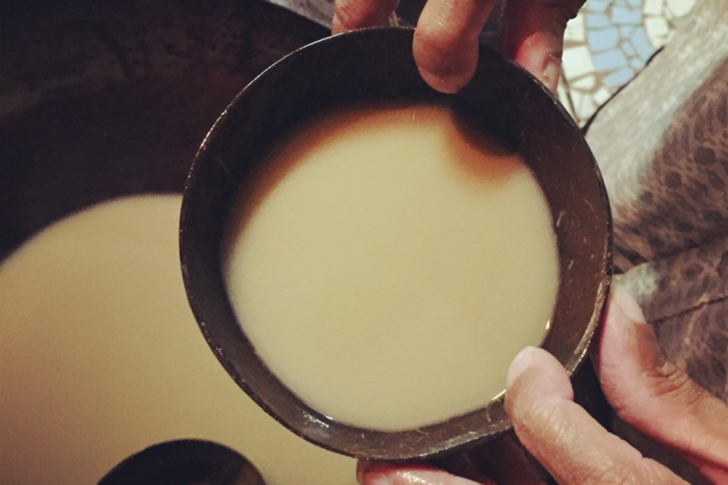
There are plenty of welcoming rituals around the world, and a lot of the more indigenous ones offer you something to consume so as to know if you’re open to them or if they can trust you. Reasons may vary but they will always take offense if you refuse to consume their offer. This is true with Fiji and their drink called “kava”. This drink is created with a local root’s juice and served in a bucket or a bowl made from wood. Though the unfamiliar liquid looks pretty muddy (and tastes like it too), locals everywhere drink them, and to a huge degree, tourists are very much welcome to do the same too.
BABY JUMPING – SPAIN
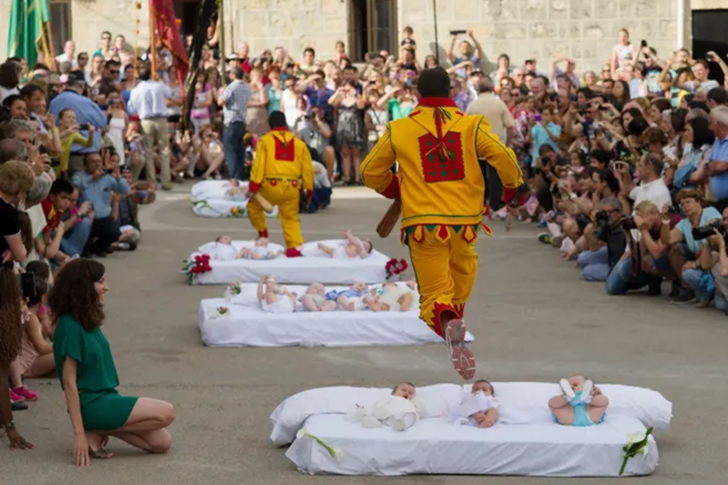
The El Colacho tradition in northern Spain literally means “baby jumping”. Babies are placed on a mattress on the flooring and a man that is dressed as the devil jumps over the infants on the ground. The premise of the tradition is that when the devil jumps over the babies, they are cleansed from their original sin and the sin stays with the devil. The practice has been observed for more than four centuries already and people everywhere, both locals and tourists, come to see it. Apparently, the particular custom is a compromise between the Catholic and pre-Catholic Celtic rituals.
GROUNDHOG WEATHER PREDICTIONS – USA

A huge part of any tradition is folklore and stories that are passed down from generation to generation through word of mouth. One of the folktales told in the United States of America is that a resident groundhog can, to a huge degree, tell the changing of the seasons. Supposedly, it will come out on the second month’s second day. If the sky is filled with clouds when he looks up from his burrow, legend says that spring is coming. On the other hand, if he runs from his shadow when the sun is up and high, it means winter will be lingering for a while. Lots of people actually invest in traveling just to see the groundhogs, the most famous one being Punxsutawney Phil.
MONKEY FEASTS – THAILAND
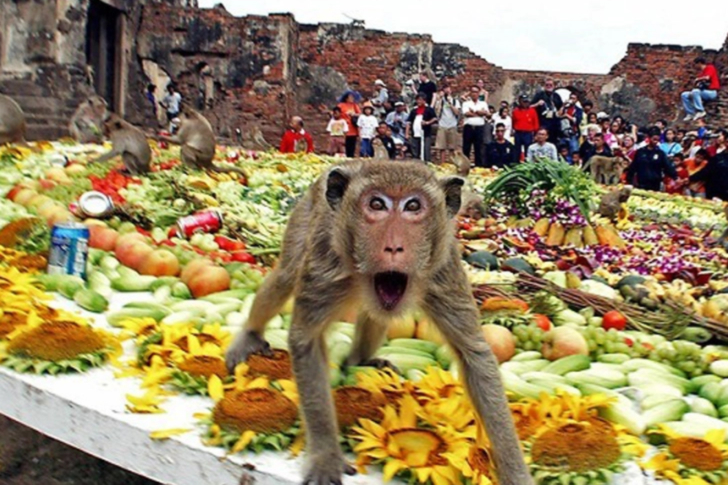
Monkeys have always been interesting to humans. They are quirky, funny, and have, to some degree, anatomies that are close to that of human beings. But Thailand took this interest one step further by creating a festival that’s centered on monkeys. When we say centered on monkeys, we really mean it as they prepare food for the monkeys. In the Lopburi temples, a grand feast is prepared for macaques, a local breed of monkeys. To add to that, they also dress up as monkeys and fill the streets with monkey- inspired decorations and art. This tradition was created in 1989 to help boost tourism rates.
WIFE CARRYING – FINLAND
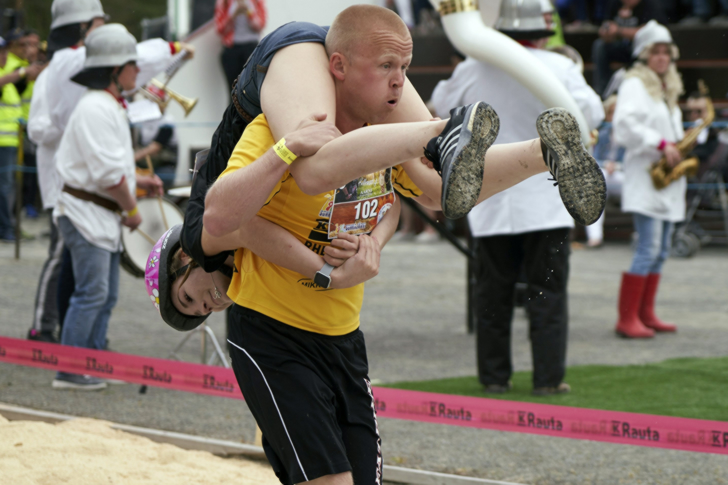
To what degree can you carry your wife’s weight? These Finnish men definitely will go all the way. Finland’s odd but amusing Wife Carrying World Championships has attracted many spectators, both locally and internationally. These consist of races of men while carrying their wives on their backs. The tradition is called eukonkanto in Finnish and has stemmed from a group of bandits that used to steal women around two centuries ago. It became a tradition, then, to not only have the annual games but also to inculcate it into their tradition. The fireman’s life, the piggyback, and the Estonian are some of their carrying styles.
TOOTH ON THE ROOF – GREECE
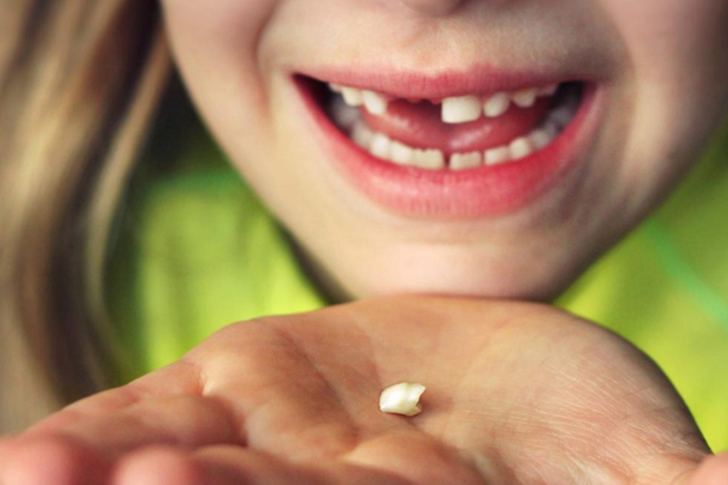
The more popular idea about baby teeth coming loose is putting it under your pillow for the tooth fairy to get in exchange for some money. While it seems normal to most of us, those on the outside find it weird too. On the other end of the spectrum, however, teeth-related traditions in Greece are very different. Instead of putting their teeth under their pillow, kids are told to throw them up to the roof. They don’t expect a jumpstart on their investment money in exchange, but a strong set of adult teeth instead. This tradition has been adopted in other places too.
SARDINE FUNERAL – SPAIN
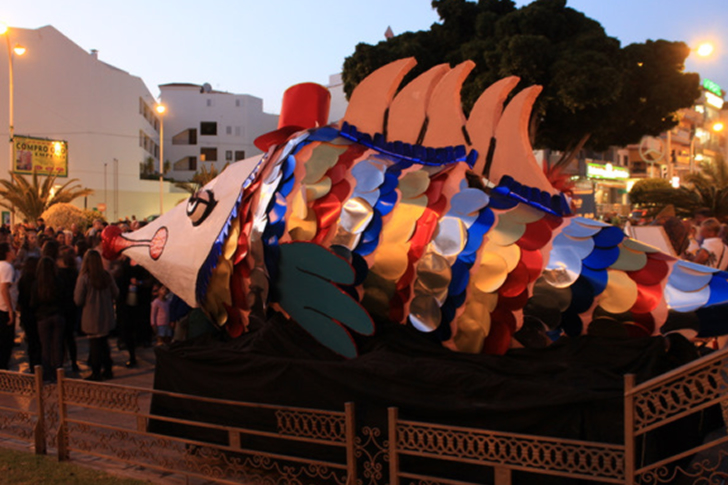
There is a vast array of weird burial practices but this one is surely one of the most bizarre of them all. A yearly carnival takes place and ends on Ash Wednesday, or the first day of Lent according to the Christian calendar. Because the carnival is all fun and games, this must come to an end when Lent arrives because it is now the period of abstinence. To get into that degree of solemnity, the Spanish have the El Entierro de la Sardina, or the burial of the sardine as a symbolic way of moving on from the pleasure.
WEEP BEFORE YOU WED – CHINA
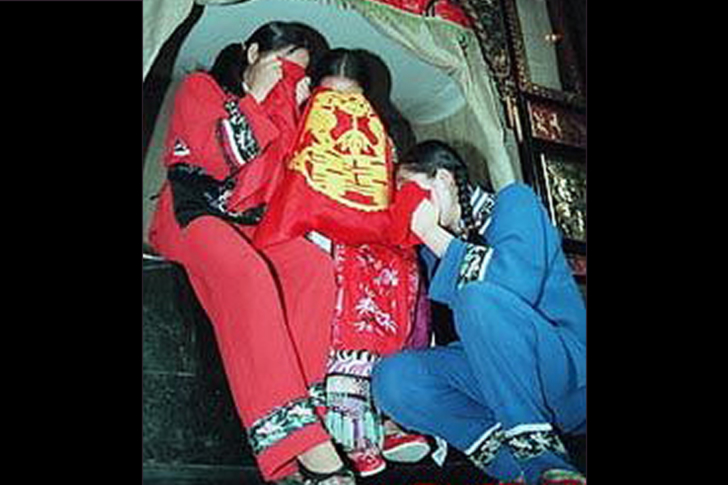
While there are many pre-wedding traditions all over the globe, this one from China is certainly a notable one. Instead of flustering over flower arrangements and last minute catering problems, brides in China are to cry before her wedding. In the Wuling Mountains, the Tujia still observe the practice of bridal weeping an hour a day before tying the knot. The mother of the bride and her entourage are also a part of the weep fest and they too cry and sing folk songs with it. We wonder if they’re crying over all the cash loans they made for the wedding.
NAUGHTY LIST VISITS – AUSTRIA, ROMANIA, CZECH REPUBLIC
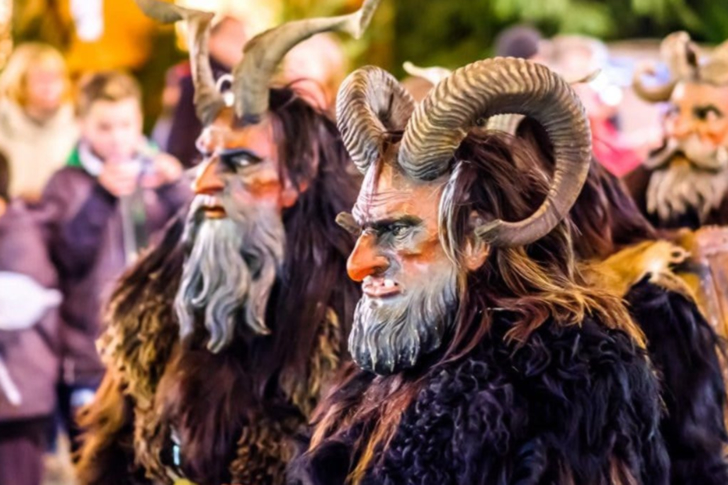
As Santa Claus is, to a huge degree, famous for having a naughty and nice list that he checks with during Christmastime, some cultures have a continuation to this story. According to Austria, Romania and the Czech Republic, the naughty list is actually forwarded to Krampus, the partner of Saint Nicholas who punishes the kids who don’t deserve Christmas goodies. He even has his own night called Krampusnacht where he goes around and visits the naughty kids. The practice has grown more famous over the years. At these rates, you might want to stay on the safe side and do your best to be on the nice list instead.
DANCING AND MUSIC EVERYWHERE – ENGLAND
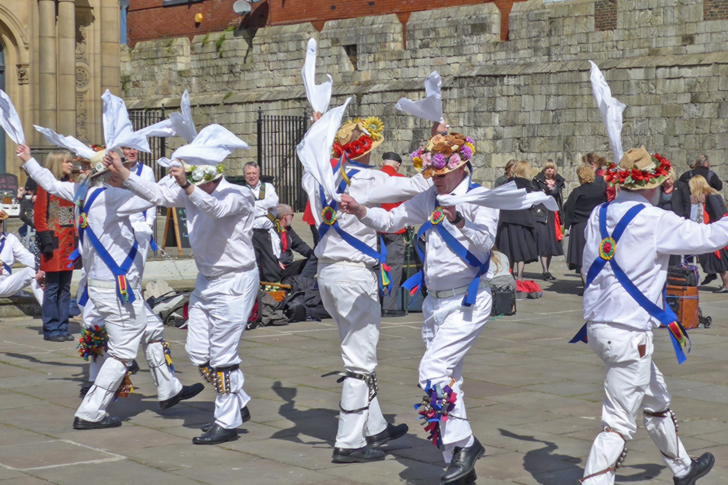
Dancing is part of many traditions. Likewise, morris dancing is linked to English tradition. Bells are attached to the shins of the dancers. Flowery hats are on their heads. They have sticks and handkerchiefs with them and they dance everywhere they go. The jingling of the bells let people know where the folk dancers are at any given time. They attract an audience anywhere and they are always present at village fetes. Stemming from folklore, the tradition’s origin has plenty of variations, but surely we need to give credit to the English for once again preserving their culture through so many years.
NO RED INK – SOUTH KOREA

Colors have different meanings everywhere, and the same color may have different implications for different cultures. This is, to a huge degree, especially true with the color red. While it can mean passion, it can also mean blood. The contrast is very far in between so one has to be careful. In Korea, it is customary to write the names of the dead in red so it is considered forbidden and probably even offensive to write a living person’s name in red. It’s best to spend time researching about the place before you go there so as to not upset traditions and embarrass yourself in the process.
INITIATION BY ANTS – BRAZIL
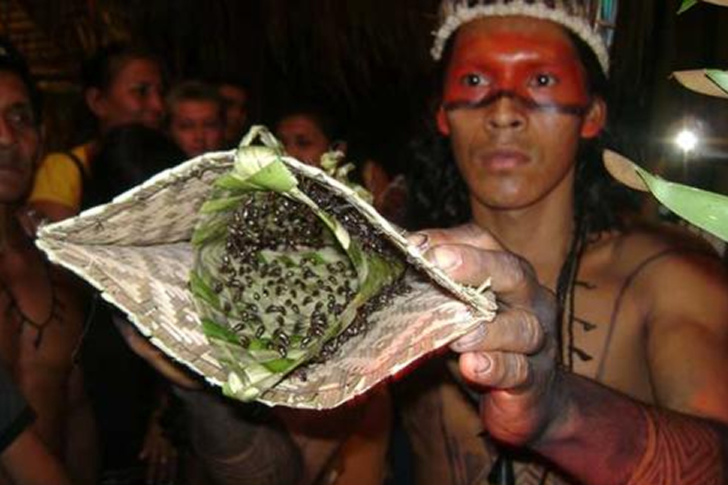
Many initiation practices vary across the world and a lot of them are bizarre in their own right. Most of the rituals concerning passage into manhood or womanhood, particularly, are the weirdest and sometimes most painful. The Satere Mawe tribe of Brazil, particularly, has one of such traditions that will force you to prove your readiness through some degree of pain tolerance. To prove their strength and bravery, young men place their hands in a basket of bullet ants that are not very friendly. If you have an idea of how painful one can bite, imagine hundreds at the same time–it’s unbelievably painful, trust us!
TOMATO FIGHT – SPAIN
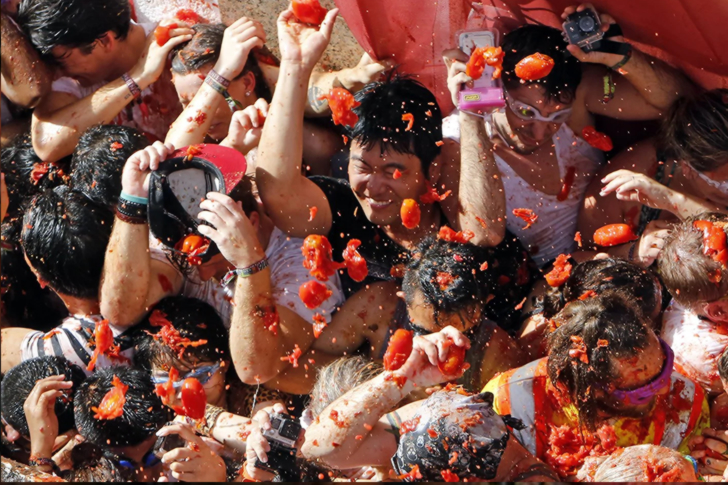
La Tomatina is a tomato fight tradition done in Spain. Just like a snowball fight, except with tomatoes instead of snow, the event progresses through using tomatoes as weapons. Tourists come and watch and even join this strange practice. It is amusing but also symbolic to the Valencian people of Bunol which is why they do it regularly. We suggest that the next travel investment that you make be an experiential one like immersing yourself in a culture’s tradition – no matter how strange. This may open your eyes to something new. It will also be a learning experience that is fun at the same time!
PRE-WEDDING CLEANUP – GERMANY

Where weird wedding customs are the topic, Germany does not fall behind. The Polterabend custom involves asking the family and friends of the couple to come to their house to break things. They should break vases, plates, and all things they could possibly break with the exception of glasses. If you think that’s weird, you’re in for a surprise because this next part is a degree weirder. The couple is then expected to clean up the mess that has been made by their loved ones. This is symbolic of marriage. They have to be able to surpass anything that might break them and clean up the mess together.
ANTI-WITCH BONFIRE – CZECH REPUBLIC
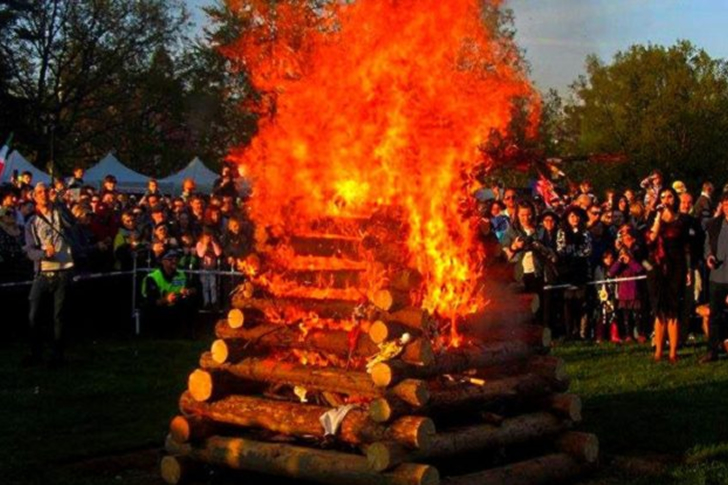
Between the feast days of St. Jacob and St. Philip, the Czech believed that witches’ powers were powerful to such a degree that they were stronger than the powers of the good. Legend has it that witches traveled in groups on their broomsticks and that lighting up bonfires would take them down and prevent the evil from prevailing. In turn, the Czech lights the biggest bonfire you would ever see. Today, not only do these ward off evil witches but they also attract swarms of tourists that come and celebrate the traditions in the heart of the city.
BRIDAL TATTOOS – MUSLIM COUNTRIES
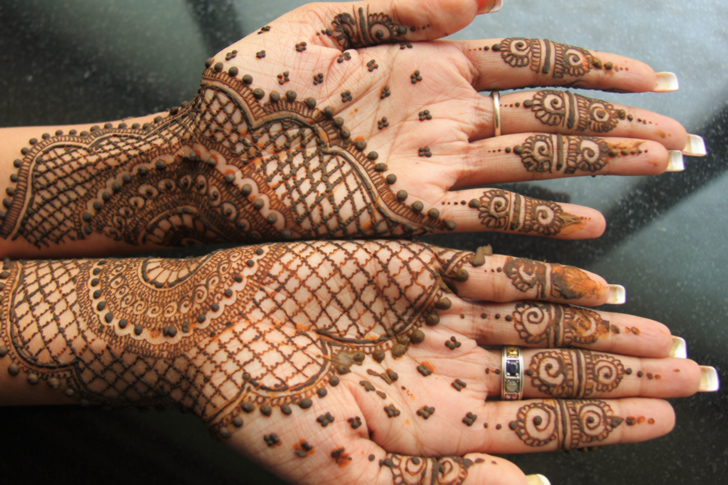
This next bridal tradition is one that is seen in multiple nations. The tattooing of brides before her wedding is, to a huge degree, customary in Muslim countries. A part of the Islam wedding ceremony, the procedure involves the female family and close friends of the bride painting designs on her body. This is supposedly symbolic of the bride’s transition into womanhood. It also provides luck in childbirth. The temporary designs are painted on with henna two days before the wedding. It is one tradition that Muslim families heavily invest in because it is considered to be both beautifying and lucky.
DEATH OVER DEFEAT – JAPAN
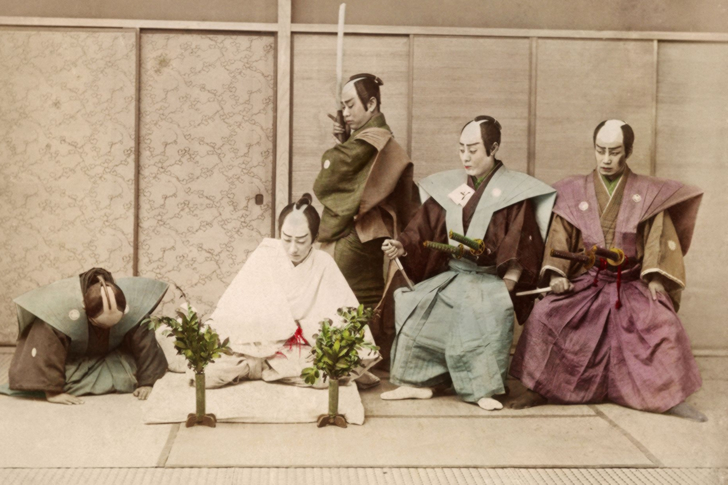
Bushido is the code of the Japanese warrior that shows the values of integrity, strength, and loyalty. On the other hand, the Seppuku is a ritual of committing suicide if you are faced with defeat. The Japanese are a people who think that suicide is noble and can, at times, be a better option, especially if the only other option is surrender. Their belief is still alive up until today and is still being practiced to some degree, especially among soldiers in the Japanese army. As life is sacred to most beliefs, this is one that is not exactly widely accepted.
CAMEL WRESTLING – TURKEY
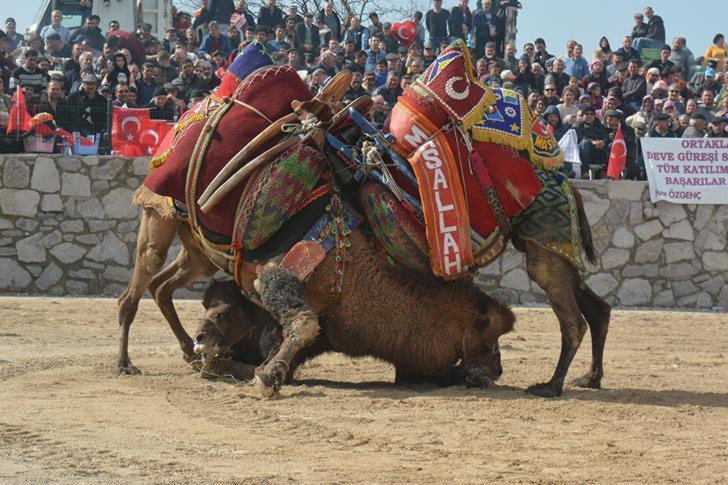
Camel wrestling originated from the Aegean region of Turkey, wherein spectators watch as two male camels fight. The fight is instigated by leading a female camel to arouse their senses; thus, the practice is often held during mating season.
In the 1920s, the Turkish National Aviation league held camel fights as fundraisers to purchase planes for the Turkish Government, instead of taking out a large business loan. For a while, the practice was discouraged but was later on brought back as part of the country’s historic culture.
The fighting ends when one camel falls to the ground or flees from the fight.
THE HAKA – NEW ZEALAND

If you’re not familiar with the Haka, you might be surprised by the practice’s intensity. The Haka is a ceremonial dance in Maori culture. It’s performed by a group during special occasions, like battles, welcoming a guest, weddings, or funerals.
It involves grunting, stomping, loud chanting, tongue wagging, and other menacing facial expressions. It is deeply ingrained in their culture that they have a Maori performing arts competition, Te Matatani, every two years.
It’s a great honor to witness Haka. It is also usually done to acknowledge great achievements, including getting one’s degree.
TOOTH FILING – INDONESIA
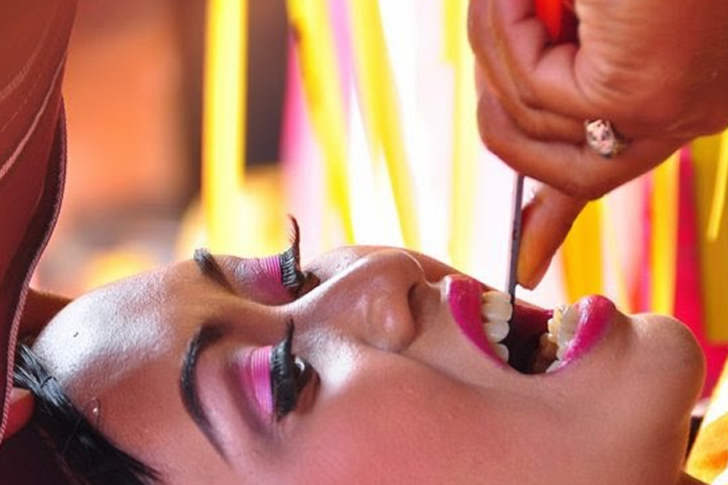
Tooth filling, or Potong Gigi, is a practice done in Bali, Indonesia wherein young adults have their incisors filed down. This is said to spiritually separate them from negative emotions such as anger and jealousy, as well as their animalistic instincts.
After having their teeth filed, they are then considered as adults and are therefore allowed to marry. During this ritual, their feet are not allowed to touch the grounds to avoid contact with evil forces so they’re carried by their parents. This tradition carries on up until today, but with modern adjustments. We wonder if their insurance covers this custom.
THE DAY OF THE GEESE – SPAIN
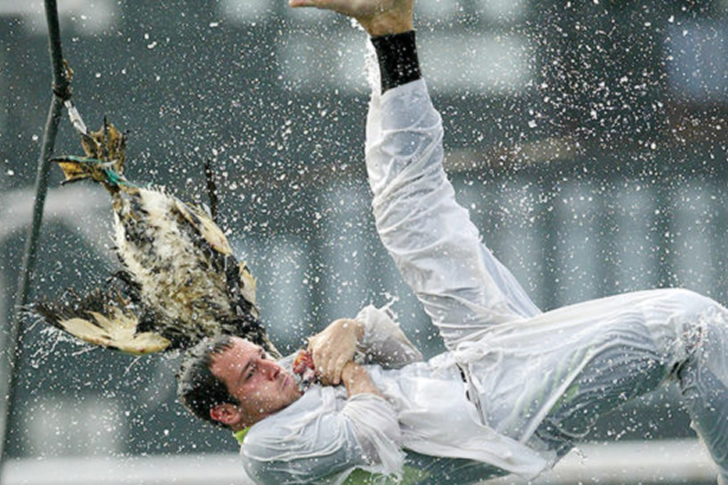
Antzar Eguna, or “The Day of the Geese” is a well-known part of the San Antolin festival in the fishing town of Lekeitio, Spain. On this occasion, young men attempt to jump off their boats to grab a greased carcass of a goose with the goal of ripping off its head.
This custom is a test of strength, endurance, and agility for these young men, proving that they’re capable of taking care of the woman they want to marry. However, nowadays, the price is just to keep the goose.
It’s a dangerous practice to a certain degree but safety precautions are made to protect the participants and make sure that they land on the water whenever they attempt to jump.
LOTUS FEET – CHINA
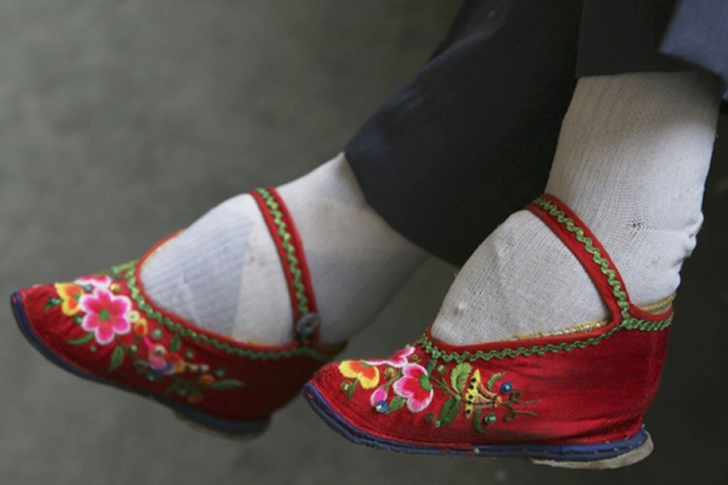
For almost a thousand years, the Chinese held the standard of beauty that forces young girls to have and maintain small feet through the painful process of foot-binding. The practice is done to girls as young as four to nine when the arch of the foot hasn’t developed fully yet. They then curl the toes under to squeeze it against the sole until it breaks. The feet are then bound with tight bandages.
It was said that small feet led to more advantageous marriages for women. However, with the avenue of more accessible education and more women pursuing a degree, the custom has since died out.
SNAKE WORSHIP – INDIA
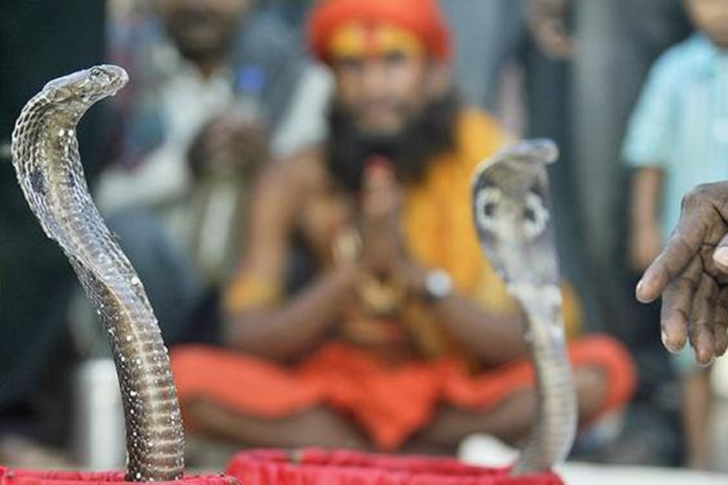
If you have ophidiophobia, you might want to avoid the Naga Panchami festival of India. The festival is all about worshipping snakes, or rather the worship of the Naga, a serpent deity.
During the festival, believers gather and dance while carrying pots with snakes as they join the procession to the temple. After prayers, the snakes are offered with milk, sweets, flowers, and even sacrifices. Prayers include prayers of gratitude and protection against the evils of life – maybe even including asking for help for their personal investment, who knows?
Although some of the snakes they bring to this festival are venomous, like cobras, snake bites are almost unheard of.
BURIAL RITUAL – BRAZIL AND VENEZUELA

In Brazil and Venezuela, the tribe of the Yanomami people has a different way of honoring their dead.
When a person dies, his or her body is burnt. The Yanomami people do not believe death to be a natural occurrence, instead, they believe that it is caused by a rival tribe’s shaman who sent an evil spirit to strike a member of the tribe. To help them reach peace, the ashes and bones of the deceased’s body are mixed into a soup that the attendees will drink.
With this, their deceased can find peace and they find the same to a certain degree.
PIERCING – INDIA
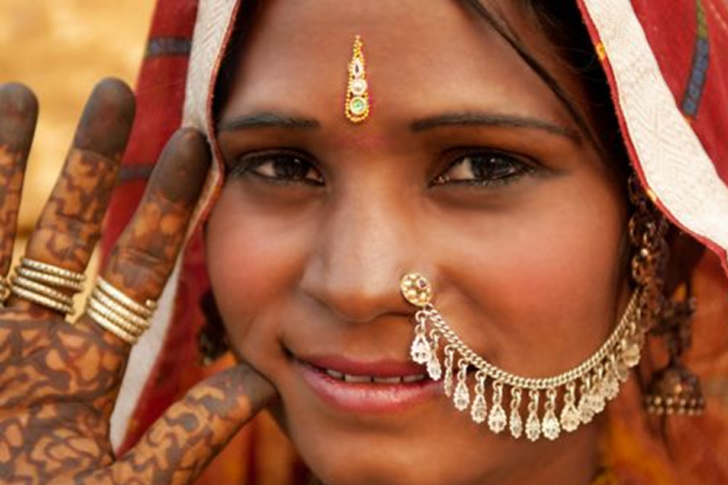
Body modifications have been a part of human history since its conception. This includes tattoos and piercings, and despite its shoddy reputation, both have been largely accepted by the general public.
However, the people of India bring it to the next level with their ritual, Hindu Thaipusam Piercings. It is a ritual within Hindus showing their devotion to their gods by piercing their body parts, like skewers through their cheeks or sharp hooks embedded on their backs.
Pilgrims claim that they feel no pain during the process, even with 48 hooks in their back, but either way, let’s hope they have good insurance covering injuries.
MUDRAS – HINDI AND BUDDHIST COUNTRIES
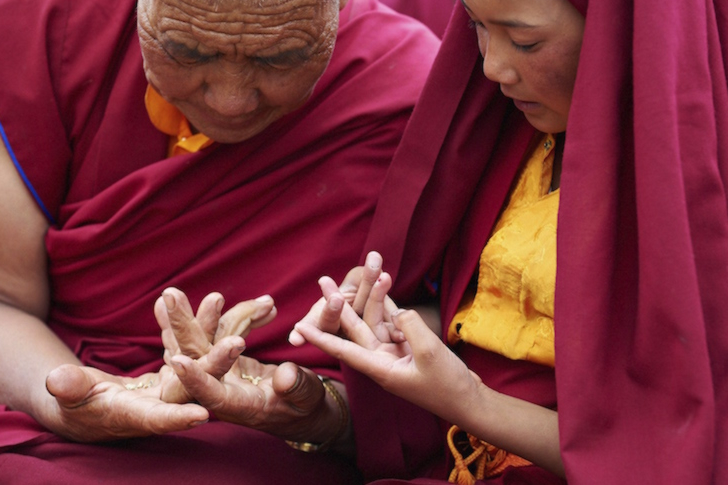
Mudras are seals, gestures, or marks that are practiced among Hindus and Buddhists. It comes from a Sanskrit word that means “symbolic hand gesture” that produces joy and happiness. It’s said to help guide energy flow within the body to create a better overall life experience.
Mudras have been integrated into yoga. It’s given credit for balancing one’s energy and creating impact to heal and strengthen certain organs in the body. They are done with breathing to increase the flow of Prana in the body as well. There are different types of mudras, including Gyan Mudra, Vayu Mudra, and Prana Mudra.
BAYANIHAN – PHILIPPINES

Bayanihan can be loosely translated to community work but is actually a custom that involves a group of people, mostly one’s neighbors, moving an entire home to a new location. The home referred to is a traditional Filipino hut that can be uprooted and carried by many people to a new location.
It’s usually done when there are predicted floods or possible landslides in the house’s original location. This custom is said to be done willingly and is due to the people’s sense of community. Imagine how much you can save if you can just uproot your house and all your belongings like this. You won’t even have to call the moving company.
DANCING WITH THE DEAD – MADAGASCAR
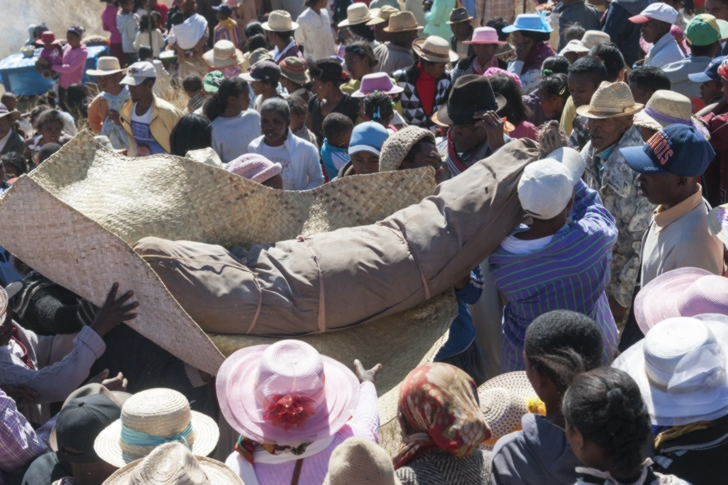
Famadihana or also known as dancing with the dead or the turning of the bones is a funeral tradition followed by the Malagasy tribe in Madagascar wherein people literally dance with their dead as part of their custom.
This is done every seven years. The family brings forth the bodies of their ancestors, rewrap them in fresh cloth, and rewrite their names on the cloth before carrying the body over their heads and dancing. It’s their way of letting the dead take part in their lives.
However, the practice has been on the decline due. The credit to this decline can be given to the health issues the process brings.
LOVE OVER COAL – CHINA
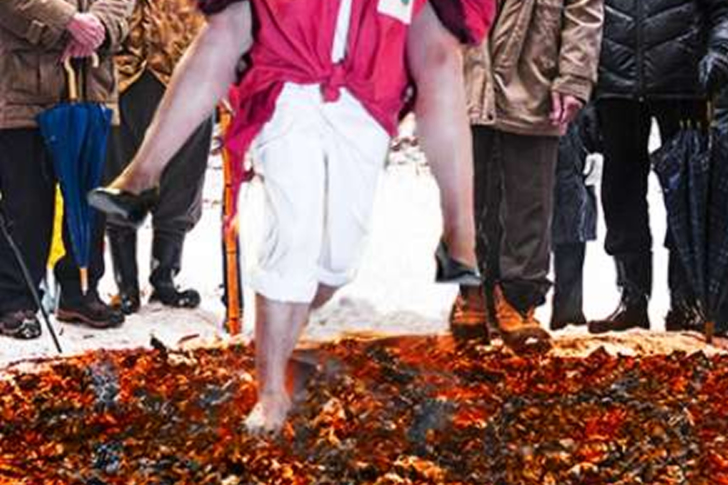
Talk about the test of true love!
In China, it is believed that if the husband carries his pregnant wife over burning coal with his bare feet, she’d have an easy childbirth. Records of this practice have existed for several thousand years.
In China, it’s done by the man while carrying his pregnant wife on his back. He’ll then walk (or run) through a path of burning coals. In a way, it’s his participation and sacrifice to give in return for his wife’s impending suffering under child labor.
Let’s just hope they both have good insurance to cover any possible injuries.

